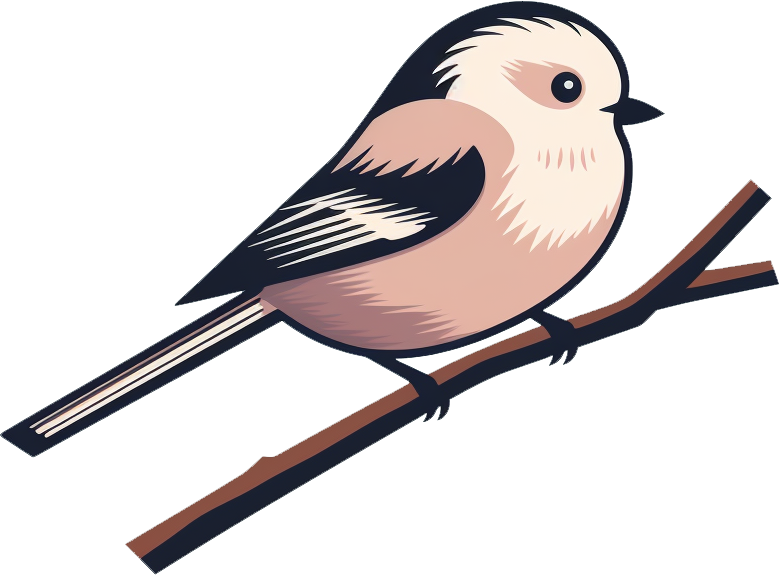Birding in Lung Cha Homestay & Khao Sam Roi Yot
Khao Sam Roi Yot, literally “the mountain with 300 peaks,” is a national park located in Kiri Chan Province. Although the park has a marine section, beautiful beaches, and a famous cave, the most interesting area for birders is the vast freshwater marsh known as Thung Sam Roi Yot. This marsh hosts an impressive birdlife, especially waterbirds.
About 250 km from Bangkok, it makes a great stop after visiting Kaeng Krachan or Pak Thale. It’s also perfect as a break on your way south (or north back to Bangkok). In my opinion, a visit to Khao Sam Roi Yot should include at least one or more nights at the excellent Lung Cha Homestay. This small lodge on the edge of the marsh is a fantastic spot to watch birds right at sunrise while enjoying breakfast.
Where to find birds at Khao Sam Roi Yot?
The park covers a large area, so in this article I’ll focus on the marsh and the surroundings of Lung Cha Homestay.
Lung Cha Homestay and surroundings
Lung Cha Homestay sits right on the edge of Thung Sam Roi Yot marsh. From the lodge’s restaurant, you have direct views of many birds. Even if you’re not staying at Lung Cha, you can walk along the marsh from Lung Cha northwards (past Thiphaksong Tham Tho Huk temple). It’s a dead-end road, so you can explore it all the way.
If there’s one iconic bird here, it would be the Grey-headed Swamphen (Porphyrio poliocephalus), seen everywhere. You’ll also spot various herons:
- Purple Heron (Ardea purpurea)
- Grey Heron (Ardea cinerea)
- Eastern Cattle Egret (Ardea coromanda)
- Intermediate Egret (Ardea intermedia)
- Great Egret (Ardea alba)
- Little Egret (Egretta garzetta)
- Yellow Bittern (Botaurus sinensis), among others.



Among ducks, you’ll see plenty of Lesser Whistling Ducks (Dendrocygna javanica) and some Cotton Pygmy Geese (Nettapus coromandelianus). Look carefully and you might catch glimpses of more secretive birds like the Ruddy-breasted Crake (Zapornia fusca) or Slaty-breasted Rail (Lewinia striata). Two species of jacanas also occur here: the Bronze-winged Jacana (Metopidius indicus) and the Pheasant-tailed Jacana (Hydrophasianus chirurgus).



Along the path to the temple, you’ll find a lovely colony of Asian Green Bee-eaters (Merops orientalis), along with Ashy Woodswallows (Artamus fuscus) and Amur Stonechats (Saxicola stejnegeri).




Bueng Bua Boardwalk
A boardwalk with a small observation tower stretches several hundred meters into the marsh, offering great views of the park’s limestone peaks and excellent birdwatching.
To reach this spot by car or scooter, you’ll need to go around the park. Another option is by boat (details below). Entrance to the national park is 200 baht per person for a day pass, allowing you to visit other sites like the Sri Nakhon Cave, Daeng Viewpoint, or the park headquarters.
You can also get there by boat. Head to the pier shown on the map and rent a boat for about 500 baht (per boat). The more people, the cheaper it is per person. The national park entry fee still applies. The boat trip takes about 30 to 45 minutes through the marsh — very pleasant, with chances to photograph birds almost at water level. The driver sometimes cuts the engine, letting you soak in the atmosphere. It’s best done at sunrise for bird activity, but sunset here is stunning too.
In terms of birds, there’s nothing really new compared to what you can see from Lung Cha and the nearby roads.
Other birding spots in Khao Sam Roi Yot
You can also explore the northern edge of the marsh for birding.
As mentioned, there are plenty of places around this national park: the headquarters area, the beach, or even some shrimp ponds where you might find shorebirds.
How to get to Khao Sam Roi Yot?
To get here, take a bus or train to Pranburi. If by train, the Wang Phong station is actually better served than Pranburi itself. From there, you’ll need to rent a scooter or get a taxi to reach the marsh or Lung Cha Homestay.
If you stay at Lung Cha Homestay, you can arrange a pick-up from the station for around 500 baht. They also rent scooters if you want to explore more of the area. If you’re driving your own car, simply follow the GPS points given earlier.
Where to stay at Khao Sam Roi Yot?
At the time of writing, the only accommodation close to Thung Sam Roi Yot marsh is Lung Cha Homestay. It’s, in my view, a must for visiting this national park. Not only is it perfect for birdwatching, it’s also a charming place to stay. Located in a small hamlet, it has only three simple bungalows. The family who owns it lives on-site and is incredibly helpful. Breakfast is included and generous. You can also eat at their small restaurant where everything is homemade. While the bungalows are basic, the setting more than makes up for it. The restaurant overlooks the marsh — you can enjoy amazing birdwatching right from your coffee cup.







Pingback: Birding at Langkawi - Birdalia
Pingback: Lung Cha Homestay : Meet Khao Sam Roi Yot birds